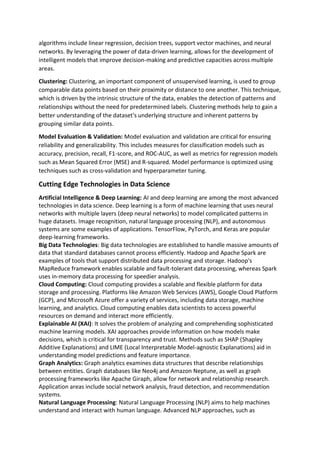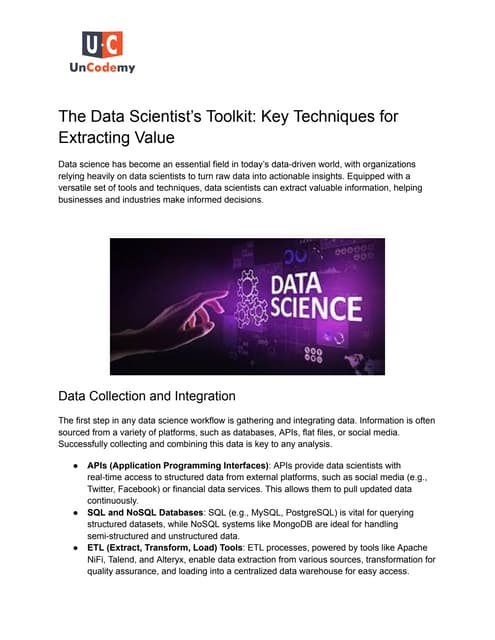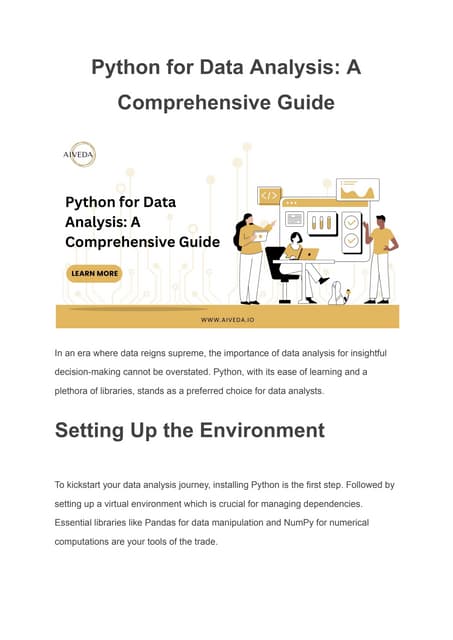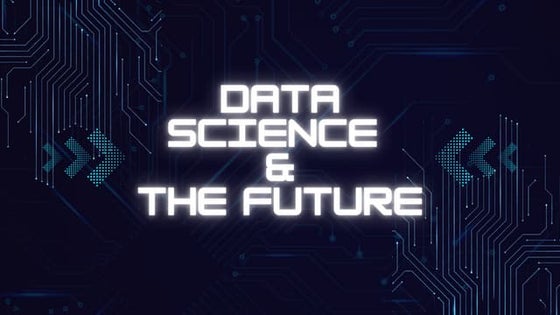Core Concepts and Cutting Edge Technologies in Data Science
- 1. Core Concepts and Cutting Edge Technologies in Data Science In the ever-changing field of data science, both new and experienced data scientists must have a thorough understanding of fundamental ideas as well as knowledge of cutting-edge technology. This article delves into these fundamental ideas and the most recent breakthroughs that are defining the future of data science. Data science is a cutting-edge field that allows individuals and businesses to extract meaningful information from data. Core Concepts in Data Science Data Collection & Acquisition: Data gathering is the first stage in any data science effort. It entails extracting raw data from a variety of sources, including databases, APIs, web scraping, and sensors. High-quality data gathering guarantees that future analyses are accurate and useful. Key factors are data relevancy, accuracy, completeness, and timeliness. Data Cleaning & Preprocessing: Data collection is generally followed by cleaning and preprocessing. This stage entails addressing missing values, rectifying errors, and normalizing data. Preparing the data for analysis involves techniques such as imputation, outlier detection, and data transformation. Proper preprocessing is required to prevent biased or misleading results. Descriptive statistics: They are quite useful for extracting insights from your data set. Essential metrics like as the mean (average), median (middle value), and standard deviation (a measure of variability) are useful for summarizing and analyzing your dataset's underlying properties. These statistical measurements not only provide a picture of key tendencies but also shed light on the data's dispersion and variability, establishing the groundwork for a thorough knowledge of its intricacies. Inferential statistics: It allows you to extend conclusions or predictions from a subset of data to a larger population. Inferential statistics, which use techniques such as confidence intervals and hypothesis testing, is a strong tool for drawing educated conclusions about the properties and relationships within a larger dataset. This approach enables data scientists to infer relevant insights beyond the scope of the examined sample, resulting in a better understanding of the underlying population. Data Wrangling: Data wrangling is a transformative process that puts raw data into a structured format suitable for analysis. This critical step includes a variety of procedures such as data importation, cleaning, structuring, string processing, HTML parsing, date and time management, missing data resolution, and text mining. Data scientists must learn the art of data wrangling. In most data science projects, data is rarely available for analysis. Instead, content might be saved in files or databases, or extracted from other sources such as web pages, tweets, or PDFs. The ability to rapidly manage and clean data reveals key insights that would otherwise be obscured. Understanding the nuances of data wrangling is demonstrated in a tutorial using the college towns dataset, which shows how this approach is used to extract significant insights from raw data. Machine Learning: Machine learning is a fundamental aspect of data science that involves creating algorithms that can learn from and predict data. Techniques used in predictive modeling include regression, classification, clustering, and anomaly detection. Key
- 2. algorithms include linear regression, decision trees, support vector machines, and neural networks. By leveraging the power of data-driven learning, allows for the development of intelligent models that improve decision-making and predictive capacities across multiple areas. Clustering: Clustering, an important component of unsupervised learning, is used to group comparable data points based on their proximity or distance to one another. This technique, which is driven by the intrinsic structure of the data, enables the detection of patterns and relationships without the need for predetermined labels. Clustering methods help to gain a better understanding of the dataset's underlying structure and inherent patterns by grouping similar data points. Model Evaluation & Validation: Model evaluation and validation are critical for ensuring reliability and generalizability. This includes measures for classification models such as accuracy, precision, recall, F1-score, and ROC-AUC, as well as metrics for regression models such as Mean Squared Error (MSE) and R-squared. Model performance is optimized using techniques such as cross-validation and hyperparameter tuning. Cutting Edge Technologies in Data Science Artificial Intelligence & Deep Learning: AI and deep learning are among the most advanced technologies in data science. Deep learning is a form of machine learning that uses neural networks with multiple layers (deep neural networks) to model complicated patterns in huge datasets. Image recognition, natural language processing (NLP), and autonomous systems are some examples of applications. TensorFlow, PyTorch, and Keras are popular deep-learning frameworks. Big Data Technologies: Big data technologies are established to handle massive amounts of data that standard databases cannot process efficiently. Hadoop and Apache Spark are examples of tools that support distributed data processing and storage. Hadoop's MapReduce framework enables scalable and fault-tolerant data processing, whereas Spark uses in-memory data processing for speedier analysis. Cloud Computing: Cloud computing provides a scalable and flexible platform for data storage and processing. Platforms like Amazon Web Services (AWS), Google Cloud Platform (GCP), and Microsoft Azure offer a variety of services, including data storage, machine learning, and analytics. Cloud computing enables data scientists to access powerful resources on demand and interact more efficiently. Explainable AI (XAI): It solves the problem of analyzing and comprehending sophisticated machine learning models. XAI approaches provide information on how models make decisions, which is critical for transparency and trust. Methods such as SHAP (Shapley Additive Explanations) and LIME (Local Interpretable Model-agnostic Explanations) aid in understanding model predictions and feature importance. Graph Analytics: Graph analytics examines data structures that describe relationships between entities. Graph databases like Neo4j and Amazon Neptune, as well as graph processing frameworks like Apache Giraph, allow for network and relationship research. Application areas include social network analysis, fraud detection, and recommendation systems. Natural Language Processing: Natural Language Processing (NLP) aims to help machines understand and interact with human language. Advanced NLP approaches, such as
- 3. transformer models (BERT, GPT), have transformed tasks including text generation, sentiment analysis, and language translation. Chatbots, virtual assistants, and content analysis all rely heavily on natural language processing. Edge Computing: Edge computing involves processing data closer to its source, such as on IoT devices or edge servers, as opposed to depending only on centralized cloud servers. This method lowers latency and bandwidth utilization, making it perfect for real-time applications. Edge computing is becoming increasingly relevant in situations involving driverless vehicles, smart cities, and industrial IoT. Conclusion Data science is a dynamic and quickly evolving profession that blends fundamental concepts with cutting-edge technology to get useful insights from data. Effective data analysis requires a solid understanding of core concepts such as data collection, cleansing, and model evaluation. Simultaneously, maintaining current on emerging technologies such as deep learning, big data platforms, and automated machine learning can improve the capabilities and impact of data science initiatives. As technology advances, data scientists must embrace both core knowledge and innovative technologies to drive growth and make data-driven decisions. By combining fundamental concepts with cutting-edge technology, data scientists can navigate the intricacies of modern data and unearth useful insights that fuel innovation and success. FAQs 1. What is the importance of data cleaning and preprocessing in data science? A: Data cleaning and preprocessing are crucial because they ensure the quality of the data. Cleaning involves correcting errors and handling missing values while preprocessing prepares the data for analysis by normalizing and transforming it. Properly cleaned and pre- processed data leads to more accurate and reliable results in subsequent analyses and modeling. 2. How does exploratory data analysis (EDA) contribute to data science? A: Exploratory Data Analysis (EDA) helps data scientists understand the data's structure and patterns before applying complex models. It involves summarizing and visualizing data to identify trends, relationships, and anomalies. EDA provides insights that guide feature engineering, model selection, and overall analysis strategy. 3. What role does cloud computing play in data science? Cloud computing provides scalable and flexible resources for data storage, processing, and analysis. Platforms like AWS, GCP, and Azure offer powerful tools and services for managing data and deploying machine learning models. Cloud computing facilitates collaboration, reduces infrastructure costs, and provides on-demand access to computing power and storage. 4. What is Automated Machine Learning (AutoML) and how does it help data scientists?
- 4. Automated Machine Learning (AutoML) simplifies the machine learning process by automating tasks such as feature engineering, model selection, and hyperparameter tuning. This technology makes it easier for data scientists to build and deploy models quickly and efficiently, even without deep expertise in machine learning. 5. What is Explainable AI (XAI) and why is it important? Explainable AI (XAI) focuses on making complex machine learning models interpretable and understandable. It provides insights into how models make decisions, which is important for building trust and ensuring transparency. XAI methods, such as SHAP and LIME, help users understand model predictions and feature importance. 6. How does Natural Language Processing (NLP) impact data science applications? Natural Language Processing (NLP) enables machines to understand and interact with human language. It is crucial for applications like sentiment analysis, text generation, language translation, and chatbot development. Advances in NLP, such as transformer models, have significantly improved the accuracy and capabilities of language-related tasks.


























































